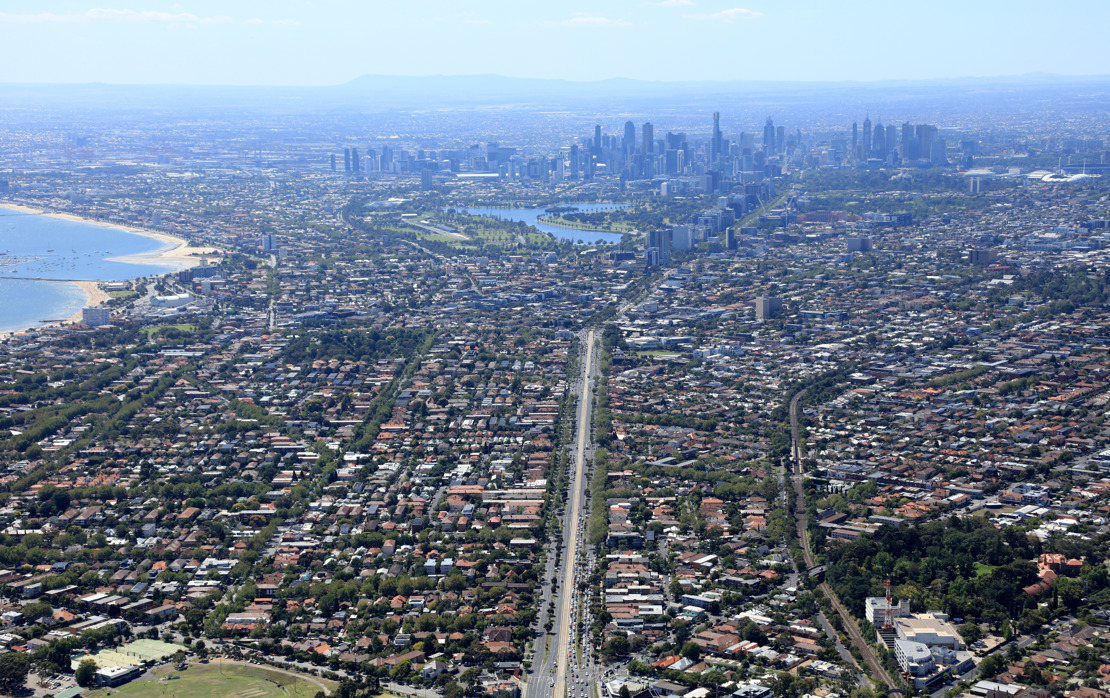Updating state planning and building systems

The contents of this page have been archived. This represents Council’s advocacy position prior to the 2022 State and Federal elections.
For updated information on any of these projects, please contact Council.
Updating planning and development policy and guidelines to require new developments to respond to the climate emergency and improve sustainability and liveability outcomes.
What is the ask?
Council requests the Victorian Government to commit to reviewing the Planning and Environment Act 1987 to align with the Climate Change Act 2017 and ensure that climate change mitigation and adaptation are embedded in Victoria’s planning system.
What is the issue this initiative will address?
There are approximately 61,000 dwellings within Port Phillip and population projections predict 31,000 new dwellings will be required by 2041. Commercial development and redevelopment of existing properties will also continue to grow.
The developments constructed now will impact the municipality’s sustainability for many years to come. It is projected that by 2050, half of Australia’s building stock will be from 2019 onwards. The opportunity to influence future change can be made today for the benefit of current and future generations.
There is a misalignment between the Local Government Act 2020, the Climate Change Act 2017 and the Planning and Environment Act 1987.
Victoria’s planning and building systems do not adequately require or direct decision-makers to factor in emissions reductions or climate change adaptation when permitting use, development and protection of land in Victoria.
What is Council proposing?
Urgent action on climate change is crucial. The opportunity to influence future change can be made today for the benefit of current and future generations.
Council is calling on the Victorian Government to update the Planning and Environment Act to specifically address climate change, in line with the Climate Change Act, and to update state planning policy and guidelines to ensure all future development supports a liveable sustainable future for our community.
This includes the following priorities:
- require all new developments to achieve net zero emissions
- strengthen requirements for onsite renewable energy, waste management, thermal performance, water efficiency, vegetation coverage and permeability
- review current tools to allow the best practically available information in relation to climate change to be used in decision-making
- provide flexibility and guidance to allow alternative adaptation options to design in flood prone areas and address policy conflicts with urban design and heritage
- update planning provisions related to retrofitting building stock to become more resilient to climate extremes. This is not currently addressed through the National Construction Code.
How does this initiative align with the Council Plan and Victorian Government priorities?
Council
Council Plan 2021-31: Sustainable Port Phillip - a City that has a sustainable future, where our environmentally aware and active community benefits from living in a bayside city that is greener, cooler, cleaner and climate resilient.
- We will partner with other councils and the Victorian Government to strengthen requirements for new developments to improve sustainability outcomes, reduce emissions, increase vegetation, better manage water and waste and adapt to climate change.
This initiative supports Council’s goals for net zero emissions by 2050 and reduced potable water use.
Victorian Government
This initiative aligns with the Guiding Principles of the Climate Change Act and supports the delivery of Victoria’s Climate Change Strategy 'Recycling Victoria’, Water for Victoria and Biodiversity 2037 as well as the Victorian Government target of zero net carbon emissions by 2050.
How does this initiative assist the community to recover from COVID-19?
This would provide clarity and consistency for the development community and create long-term jobs in sustainable technology and infrastructure sectors. Sustainably constructed buildings reduce ongoing costs for residents, particularly for heating and cooling.
Cost and current status?
Cost
The cost of considering climate change in Victoria’s planning systems is negligible compared to the cost of inaction.
If emissions continue to grow at the rate seen in recent decades, and no adaptation action is taken, the estimated costs of damage from climate change in Victoria is estimated to be over $150 billion by 2050[1].
Status
The Victorian Greenhouse Alliances and the Council Alliance for a Sustainable Built Environment completed research in 2021 to determine what changes are needed to ensure that Victoria’s planning system effectively tackles climate change.
The Victorian Government’s ESD Roadmap project, currently underway, seeks to improve the environmental performance and resilience of buildings in response to urban growth and a changing climate. However, these proposed reforms will not be sufficient to meet the Victorian Government’s own ambitions and targets related to sustainability and climate change, or those of many councils in Victoria.